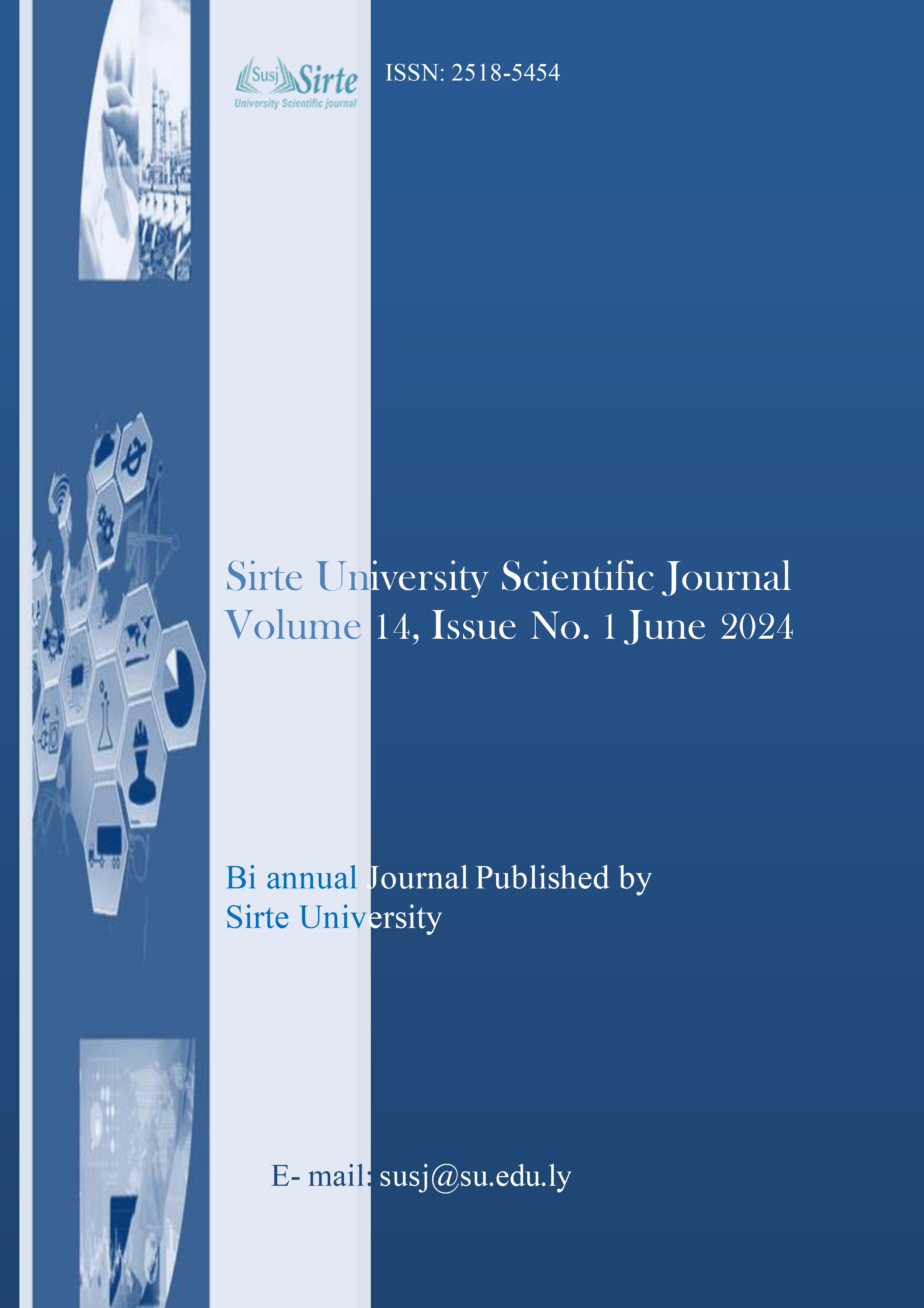The effect of Solar Systems Connecting on water heating production
DOI:
https://doi.org/10.37375/susj.v14i1.2803Keywords:
Solar collector testing, energy output and solar system connectionsAbstract
The study is based on taking advantage of high solar radiation the possibility of applying parabolic cutting technology to produce steam in various thermal uses and proposes to captures a large portion of the diffuse solar radiation in addition to the direct component with a concentration rate of up to 92%. A computational model has been developed to assist in the design of two solar parabolic dishes. The solar parabolic dish was fabricated at Sirte University; an experimental investigation was carried out to verify its operation under outdoor test conditions. The glass dish test was carried out on 10th June 2020, from morning 07:00 to 17:00. Under this condition, measure the maximum outlet temperature of 96.7 0C, and solar radiation was 1005 W/m2. The aluminum dish test was carried out on the 11th june 2020, from 08:00 to 17:00. Under this condition, measure the maximum outlet temperature of 78˚C was reached with radiation 1050.5 W/m2. The absorber tube is a pipe placed at the focal line of each dish. The parallel and series connection configuration of the system investigated to evaluate the arrangement type's effect on the thermal performance. It has been found that the thermal performance in series connection is higher than the parallel connection; it takes longer time than the parallel connection to absorb the heat. The maximum outlet temperature for series and parallel connections are 99 0C and 93 0C respectively when flow rate 3 LPM.
References
Kalogirou SA. Solar thermal collectors and applications. Progress Energy Combust Sci 2004; 30:231–95.
SolarPACES. Solar PACES technology characterization solar dish systems. Available from http://www.solarpaces.org/images/pdfs/solar_dish.pdf ; 2016 [Last accessed on 10 October 2016].
De Jong P, Sánchez AS, Esquerre K, Kalid RA, Torres EA. Solar and wind energy production in relation to the electricity load curve and hydroelectricity in the northeast region of Brazil.
Renew Sustain Energy Rev 2013; 23:526–35. http://dx.doi.org/10.1016/j.rser.2013.01.050.
Kalogirou SA. Solar thermal collectors and applications. vol. 30 2004. http://dx.doi.org/10.1016/j.pecs.2004.02.001.
Harrison, J., 2001. Investigation of Reflective Materials for the Solar Cooker. Florida Solar Energy Center. Available from: http://www.fsec.ucf.edu/en.
Sup BA, Zainudin MF, ZanariahShamsirAli T, Bakar RA, Ming GL. Effect of rim angle to the flux distribution diameter in solar parabolic dish collector. Energy Proc 2015; 68:45–52. http://dx.doi.org/10.1016/j.egypro.2015.03.231.





